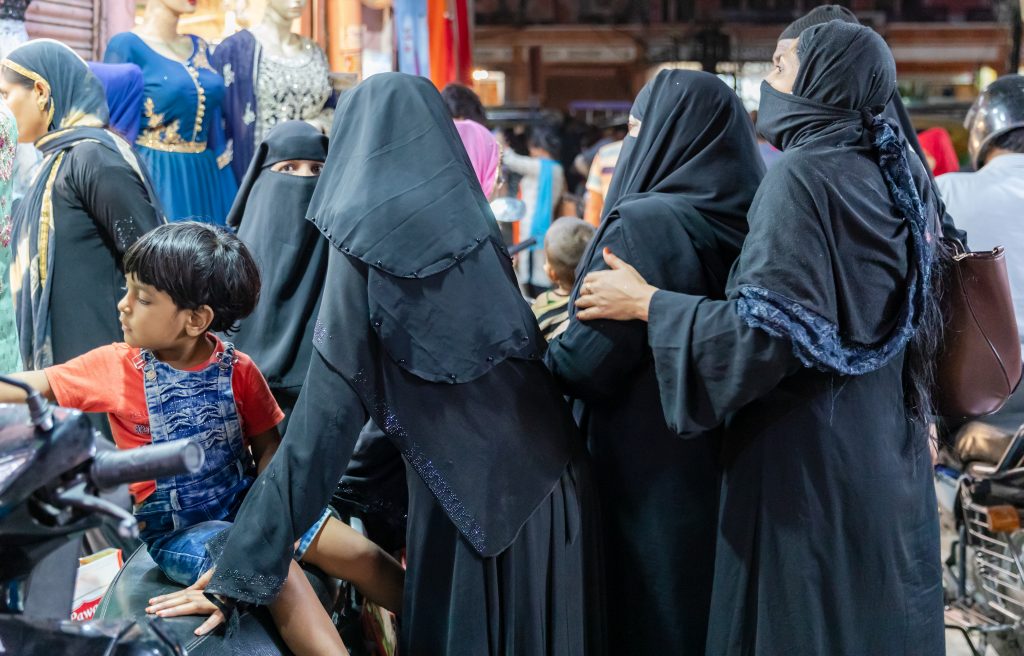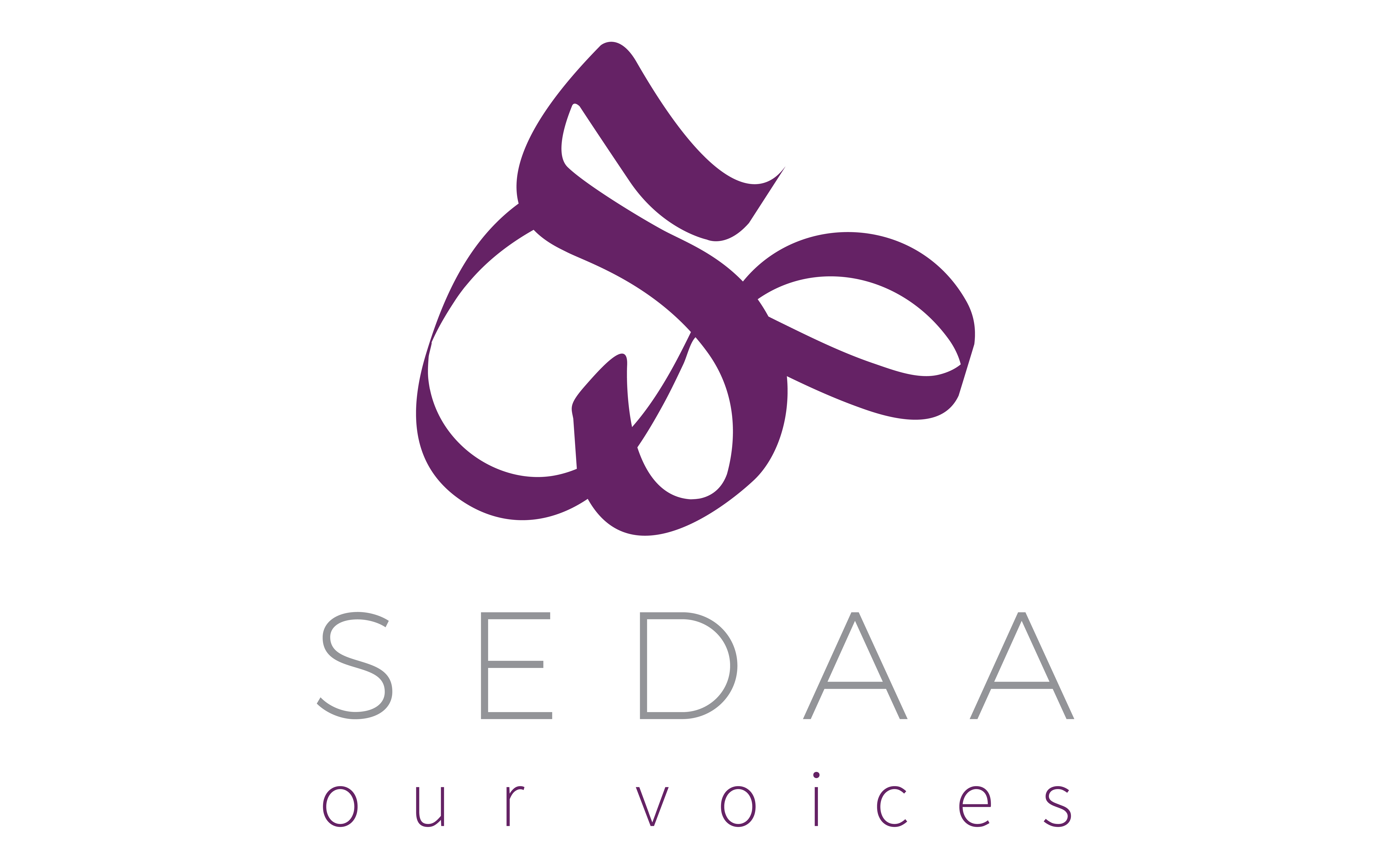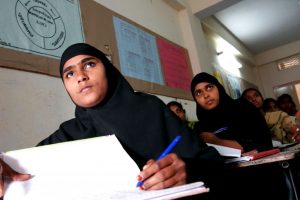By Khadija Khan
For months now, a debate around hijab and free choice has been raging in India.
This all was instigated in January, when a group of teenage girls at a Karnataka college claimed that they had been barred from entering their classroom while wearing a headscarf.
The issue soon snowballed. The college’s decision sparked protests, forcing the state to shut schools and colleges for several days.
These students started campaigning outside the college gates. Predictably, it provoked a counter demonstration from Hindu nationalist students who turned up outside the building wearing saffron shawls (the symbolic colour of Hinduism), which further intensified the situation.
Eventually, the case went all the way to the state’s high court, where a landmark ruling decreed that the hijab is not “essential” to Islam. The court also upheld a state government order that had banned headscarves in classrooms.
The court was right to take the side of the college. After all, this was a decades’ old uniform policy that allows girls to wear hijab on the school premises, but doesn’t allow any religious or cultural symbols in the classroom.
But this is not the first time in India that a ban on Islamic veiling has become an issue. In 2018, two Muslim schoolgirls filed a petition in Kerala high court to wear hijab, but the court dismissed it and ruled in favour of their school.
And in 2019, the Muslim Educational Society (MES), also in Kerala, which runs over 150 educational institutions in the state, banned all face-covering attires from its campuses.
Critics believe that the whole controversy around hijab is manufactured by nationalist Hindutva forces trying to intimidate and impose their agenda on minorities in Karnataka, where Prime Minister Narendra Modi’s Bharatiya Janata Party is in power.
Nevertheless, we should remind ourselves that India is a secular, democratic state where educational institutions – including Islamic faith schools – are free to prescribe a uniform for pupils. Likewise, certain educational institutes maintain a uniform policy to uphold secular values.
Therefore, framing this debate as though Muslim girls have been denied their right to education is disingenuous, when there are other factors that hinder their opportunities in life.
A 2006 report, commissioned by then prime minister Manmohan Singh, revealed that the literacy rate among Muslims in 2001 was at least 5% below the national average of 64.8%, and in urban areas the gap was considerably massive.
The report further stated that the worker population ratios are significantly lower in Muslim community in rural areas, mainly due to lesser participation of Muslim women in the economic sphere.
Therefore, arguing that allowing Muslim girls to wear hijab would grantee their education is a farce and doesn’t represent ground realities.
Sadly, many Muslim girls are taken out of school and must give up their education to be married off at the age of puberty. This regressive practice is in clear violation of the Prohibition of Child Marriage Act, which states the minimum age of marriage for a woman is 18.
Mainstream Muslim organisations have protested this law on many occasions saying that this law “violates Muslims’ fundamental right to follow their religion and the Muslim.”
Fundamentalist Muslims believe that Islam instructs men and women to dress modestly. Hijab and the full-on veil – or burqa – are the more rigid and extreme manifestations of this interpretation.
But we must remind ourselves that there are progressive voices from within Muslim communities that refuse to comply with this definition of modesty. Many renowned Muslim scholars defy hijab as a religious obligation for women.
Fundamentalists conveniently use the language of “choice” and “freedom” when they wish to assert Muslims women’s right to wear hijab, but not so much when they refuse to wear one.

Pic Credit: Ninara/Flickr
Take the example of Aroosa Parvaiz, a Muslim girl from Srinagar, Kashmir, who topped her year’s class exams in science. Instead of being happy for her, she was subjected to vile trolling for not wearing a hijab.
Unfortunately, there has been hardly any condemnation from the Left, who prefer to sit on the fence when it comes to defending women’s right in the face of religious fundamentalism.
I spoke to Shabana Dean, from Indian Muslims for Secular Democracy, who explained why this is the case. India, she said, is caught up between the Hindu right-wing (that has its eyes on upcoming elections in multiple states) and the Muslim right-wing, which “wants to use Muslim girls as pawns in their fight for supremacy.”
Young Muslim girls are forced into hijab by early indoctrination, burdened with carrying the “weight of community honor”. Meanwhile, Indian feminists and liberals have been driven to support the Hijab as a ‘choice’, due to years of conditioning to believe so.
This pattern is replicated in the international media, which has projected the whole situation as an attack on Muslim girls’ right to wear hijab.
Such biased coverage conveys a misleading message to the world. This neither presents the ground realities nor resonates with courageous Indian women who are defying the patriarchy at the risk of their lives.
In 2017, Indian Supreme Court banned the inhuman Islamic tradition of triple talaq, which allows Muslims men to divorce their wives simply by saying the word talaq (divorce) times.
Many Islamic countries, including Egypt, the United Arab Emirates, Pakistan and Bangladesh, have already banned triple talaq, but this remained prevalent in India for decades. Several women from Muslim heritage demanded reforms in Islamic laws, which fell on deaf ears until recently.
Patriarchal norms and misogynistic rituals stem from religious orthodoxy, which perpetuate these discriminatory practices against women with impunity.
Other horrific practices include Female Genital Mutilation in the Indian Muslim Bohra Community. And yet FGM is yet not considered a crime in India.
In 2018, a study reported a 75% incidence of FGM among the Bohras. These staggering revelations came just weeks after the Indian government announced that the existence of FGM is not backed by any data in the country.
Therefore, it is very important to understand how the practice of veiling with other misogynistic rituals and practices have been crafted under the pretext of the religious right.
It is unfortunate that a matter about a college uniform, an issue that should have been resolved among students and the institution, has been hijacked by both the Hindu and Muslim right wing to score political points against each other.
Hindu nationalism is a threat to a secular and pluralistic India. But to condemn it does not mean we should allow Muslim fundamentalists carte blanche to impose their obnoxious and regressive beliefs on women in the name of “religious freedom”. Extremism should be condemned in all its forms without any reservations.
It is time to put education first. For if anything can liberate women and girls, it is ensuring that they are fully aware of their rights – and that we all support them in the face of growing pressure from their communities.

Khadija Khan is a journalist and commentator based in the UK. You can follow her on Twitter.


Thats crazy, lets hope its not true